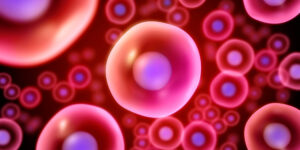An increase in the number of cells growing in cell culture is the result of two opposing effects: an increase in the number of cells that traverse the cell cycle and divide into two daughter cells (mitosis), or a decrease in the number of cells that die according to different modalities, the most prominent one being apoptosis, or both.
Insulin and IGF-I are capable of facilitating cell progression through the cell cycle and inhibiting apoptotic mechanisms.
This section will review the mechanisms that control apoptosis, while regulation of the cell cycle is discussed in another section.
Although there were earlier descriptions of some of the cell morphological changes associated with programmed cell death, the term apoptosis was first used in the seminal paper published in the British Journal of Cancer in 1972; written by John Foxton Ross Kerr, Professor of Pathology at the University of Queensland (Australia), Alastair A. Currie, Professor of Pathology at the University of Aberdeen (Scotland), where Kerr was on sabbatical, and his graduate student Andrew H. Wyllie (later Professor of Pathology at the University of Cambridge).
In 2002, the Nobel Prize in Physiology and Medicine was given to Sydney Brenner, a South African biologist at the Laboratory of Molecular Biology in Cambridge (UK), John E. Sulston, a British biologist at the University of Cambridge (UK), and to H. Robert Horwitz, biologist at MIT in Boston (USA), for their work on the genetic regulation of organ development and programmed cell death in the worm Caenorhabditis Elegans.
This mechanism of controlled cell deletion is common to all multicellular organisms. Cells undergo marked morphological changes: blebbing, cell shrinkage, nuclear fragmentation, chromatin condensation and chromosomal DNA fragmentation. Cells eventually split into small closed entities (apoptotic bodies) that can be phagocytosed by other cells, preventing the release of toxic cellular substances that may cause necrosis. Apoptosis is triggered by a variety of environmental stimuli, both physiological and pathological including stress. The intracellular mechanisms involved in apoptosis are very complex; while most proteins involved in the apoptotic network are known, much work remains to be done to unravel their interactions.


